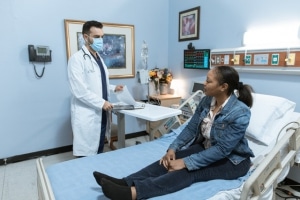4 Trends to Watch in Autoimmune Immunoassay Market

Demand for healthcare and diagnostic tests in all major markets is driven by aging populations, women, and increased incidence of autoimmune conditions.
The market for autoimmune immunoassays will total an estimated $971.7 million in 2021 and is forecast to exceed $1 billion by 2026, according to Autoimmune Immunoassay Brief, a recent report by leading medical market researcher Kalorama Information.
The autoimmune immunoassays market—including lab-based autoimmune immunoassays and POC-based autoimmune immunoassays—is only a small part of the total IVD immunoassay diagnostic testing market, yet the prevalence of autoimmune diseases are rising and there continues to be improved sensitivity for testing. In the report, Kalorama Information’s estimates includes revenues for reagents and instruments for the testing of autoimmune immunoassays. It does not include services.
“Currently, a considerable number of diagnostic tests are available or in development for the detection of autoimmune diseases.”
Because of this potentially large and growing market, vast opportunity exists for discovery and advancement in this arena. Competition within this market is expected to increase dramatically. However, in fledgling autoimmune IVD diagnostic testing markets, a golden opportunity exists to capitalize on new testing innovations without significant competition. Among companies already successfully operating in the segment, Thermo Fisher and INOVA standout due to their robust autoimmune immunoassay offerings and impressive pipelines.
Regarding present and future growth opportunities, Kalorama Information has identified several important trends. These include, but aren’t limited to:
- Trend 1: There are vast opportunities for manufacturers of autoimmune diagnostic testing products in the autoimmune arena
- Because most autoimmune diseases are of unknown etiology, the potential discovery of many other autoimmune diseases will likely lead to increased opportunities in the discovery, manufacture and marketing of autoimmune IVD diagnostic testing products.
- Trend 2: Women are disproportionately affected by autoimmune disease
- Because the population is aging and there will be more women aging, they are going to be affected more often than men with autoimmune diseases. This will likely create a large demographic that will benefit from novel and sophisticated autoimmune IVD diagnostic testing.
- Trend 3: Sophistication in testing is leading to more automated effective testing
- Diagnostic companies are continuing to gradually improve their fully automated platforms. In addition, many companies are working to develop innovative new platforms. Demand for healthcare and diagnostic tests in all the major markets is driven by aging populations and increased incidence of autoimmune conditions. Considering the demand for these tests, they have been reformulated for automated analyzers where the cost per test is traditionally lower.
- Trend 4: Testing needs to be cost effective but precise to identify autoimmune diseases
- The commercialization of sophisticated new IVD products and technologies comes as a double-edged sword—some of these new devices and technologies are expected to carry a high price tag and the payment infrastructure in most countries has not evolved to cover many of the newer approaches to patient management. The result, as is often the case, is that technology is far ahead of healthcare regulations and reimbursement plans. The onus is, therefore, on manufacturers to prove their new intervention is not only effective but also supplies a cost-effective treatment alternative.

